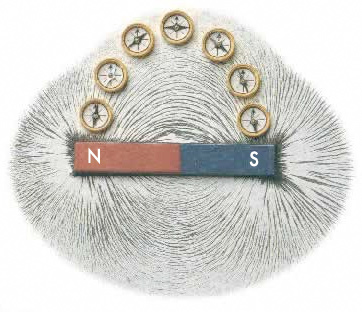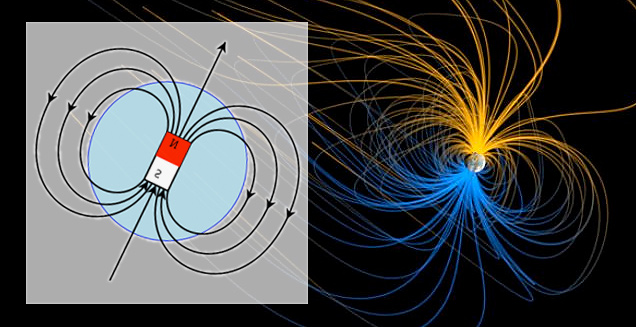A magnet may be the most familiar macroscopic example of an electromagnetic field to us.
 When a magnet is sitting on its own, far from any iron or other magnets, there doesn’t seem to be much happening. However, the magnet still produces an invisible magnetic field all around itself. When a second object, which can interact with a magnetic field, comes near the magnet, we see the effects.
When a magnet is sitting on its own, far from any iron or other magnets, there doesn’t seem to be much happening. However, the magnet still produces an invisible magnetic field all around itself. When a second object, which can interact with a magnetic field, comes near the magnet, we see the effects.- Certain types of materials respond strongly to magnetic fields, and they are called ferromagnetic materials.
- Cobalt, nickel and especially iron are the most common ferromagnetic materials. Iron filings, compass needles (usually made from magnetized iron or steel) and magnets get twisted about and pulled to or pushed away from the first magnet, without visibly touching it. This interaction is why compasses point towards the north; they are aligning themselves with the Earth’s magnetic field.
When scientists and students imagine the electromagnetic field, they use lines drawn to represent the field and show information about how a second object would interact with it. Notice how these lines are similar to the pattern formed by the iron filings above!

